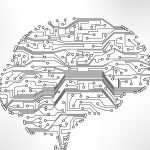Phone Radiation May Impact Memory in Adolescents
Node Smith, ND
A first ever study to look at the effects of radiofrequency electromagnetic field (RF-EMF) on the brains of adolescents has found that this type of radiation may affect memory in the brains of teenagers.1 RF-EMF exposure has increased tremendously over the last 25 years with an increasing usage of devices that rely on these frequencies to operate. The most common source of exposure to the brain is the use of the mobile phone close to the head. This is the type of exposure this study researched.
RF-EMF exposure from wireless devices & memory performance
The study was conducted in Switzerland at the Swiss Tropical and Public Health Institute (Swiss TPH), and specifically assessed the association between RF-EMF exposure from wireless devices and memory performance in teens. The study is part of a follow up on a 2015 study on the same topic – these are the world’s first epidemiological studies on this topic.
About 700 participants were recruited from both rural and urban junior high schools in Switzerland. Ages ranged from 12 to 17 years, and participants were followed for one year.
Study findings
The study found that cumulative brain exposure to RF-EMF from cell phone use was negatively correlated to memory performance. This confirmed the prior results published in 2015. Specifically, figural memory was seen to be affected most. Figural memory is primarily located on the right side of the brain, and individuals using phones on the right side of the head were noted to be more affected by the RF-EMF. The authors of the study commented that this correlation may support the hypothesis that it is the RF-EMF being absorbed by the brain that is responsible for the noted associations.
RF-EMF absorbed by the brain
The study does also comment that other forms of wireless communication, such as sending text messages, and using the internet were not found to have an association with memory performance. The authors also mention that drawing conclusions at this time is not possible due to the changes that are seen in the brain, behavior, cognition, and also mobile phone use during puberty. Further research is certainly needed.
The RF-EMF exposure question is a relatively new field of research, yet it may not be a bad idea to advocate headphone use over direct contact with the ear during wireless device use.
Source:
- Schoeni A., Roser K., Röösli M. (2015) Memory performance, wireless communication and exposure to radiofrequency electromagnetic fields: a prospective cohort study in adolescents. Environmental International. Volume 85. Page 343-351. DOI: 10.1016/j.envint.2015.09.025
Image Copyright: <a href=’https://www.123rf.com/profile_antonioguillem’>antonioguillem / 123RF Stock Photo</a>
 Node Smith, ND, is a naturopathic physician in Portland, OR and associate editor for NDNR. He has been instrumental in maintaining a firm connection to the philosophy and heritage of naturopathic medicine among the next generation of docs. He helped found the first multi-generational experiential retreat, which brings elders, alumni, and students together for a weekend camp-out where naturopathic medicine and medical philosophy are experienced in nature. Four years ago he helped found the non-profit, Association for Naturopathic ReVitalization (ANR), for which he serves as the board chairman. ANR has a mission to inspire health practitioners to embody the naturopathic principles through experiential education. Node also has a firm belief that the next era of naturopathic medicine will see a resurgence of in-patient facilities which use fasting, earthing, hydrotherapy and homeopathy to bring people back from chronic diseases of modern living; he is involved in numerous conversations and projects to bring about this vision.
Node Smith, ND, is a naturopathic physician in Portland, OR and associate editor for NDNR. He has been instrumental in maintaining a firm connection to the philosophy and heritage of naturopathic medicine among the next generation of docs. He helped found the first multi-generational experiential retreat, which brings elders, alumni, and students together for a weekend camp-out where naturopathic medicine and medical philosophy are experienced in nature. Four years ago he helped found the non-profit, Association for Naturopathic ReVitalization (ANR), for which he serves as the board chairman. ANR has a mission to inspire health practitioners to embody the naturopathic principles through experiential education. Node also has a firm belief that the next era of naturopathic medicine will see a resurgence of in-patient facilities which use fasting, earthing, hydrotherapy and homeopathy to bring people back from chronic diseases of modern living; he is involved in numerous conversations and projects to bring about this vision.










